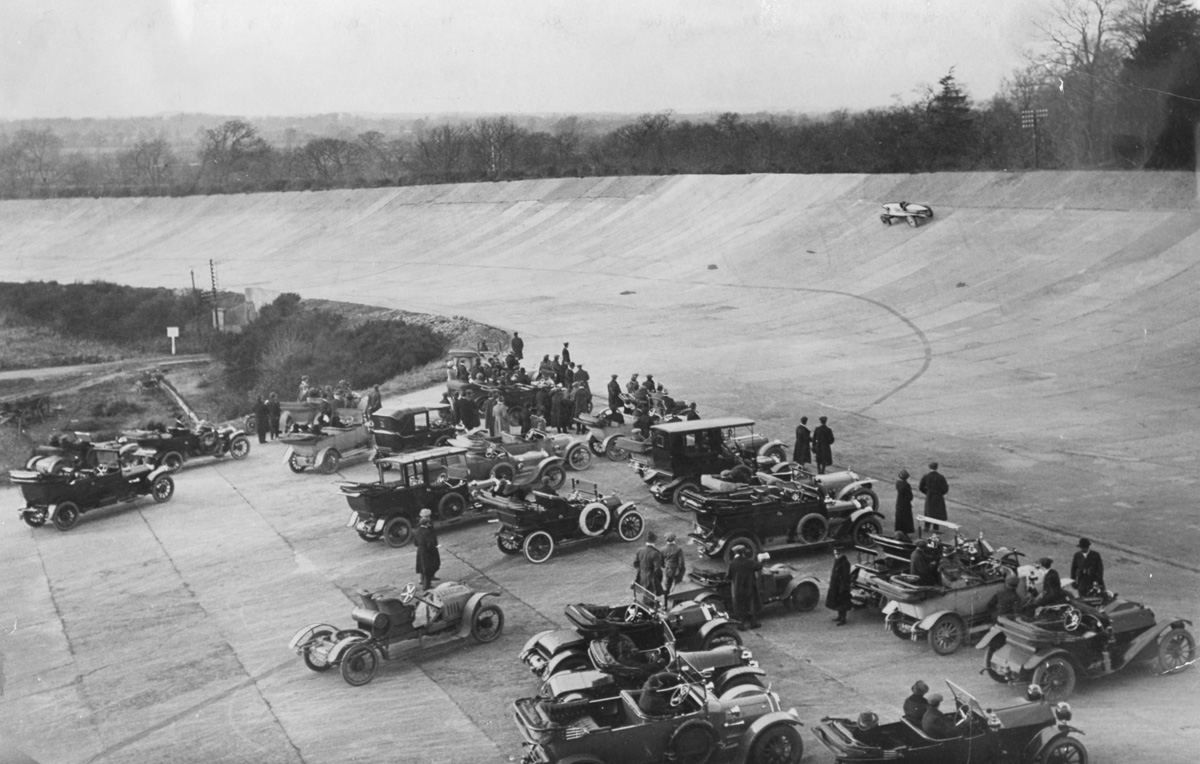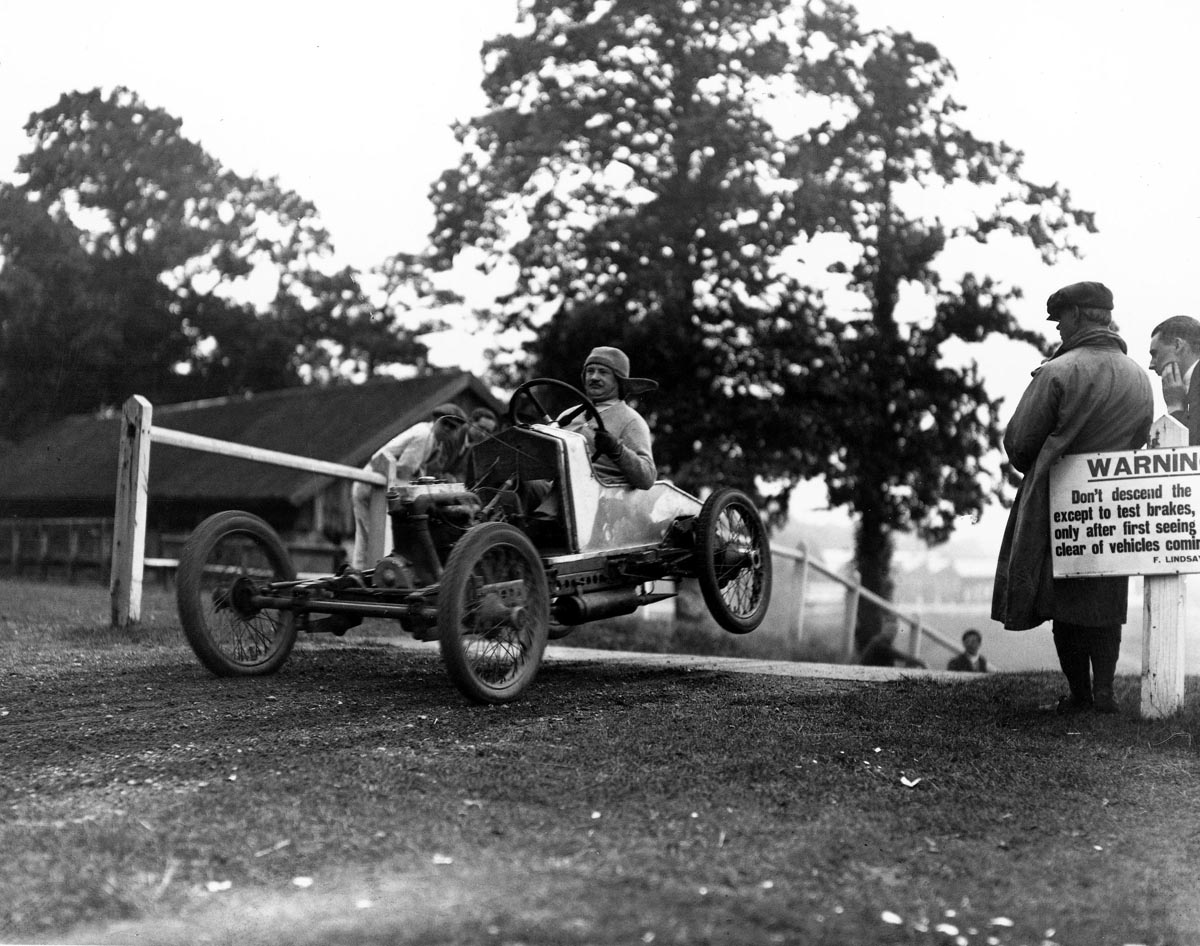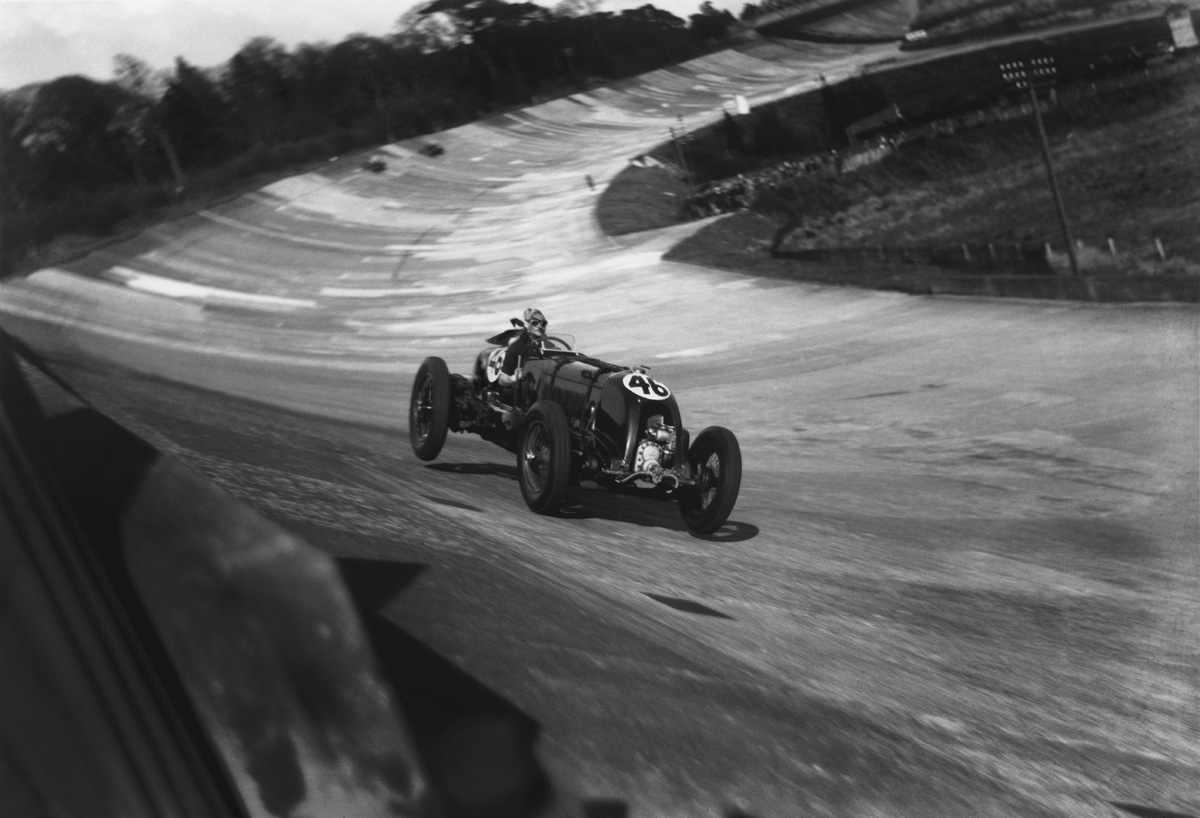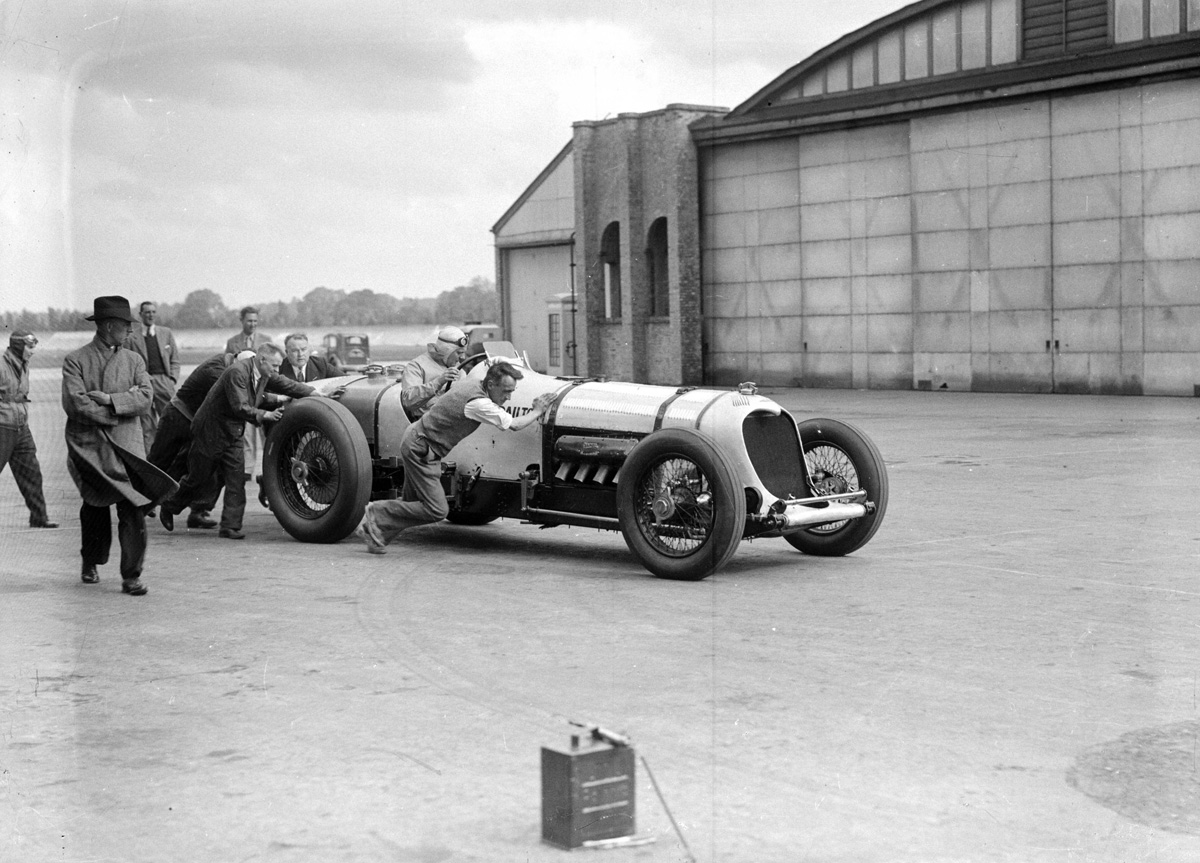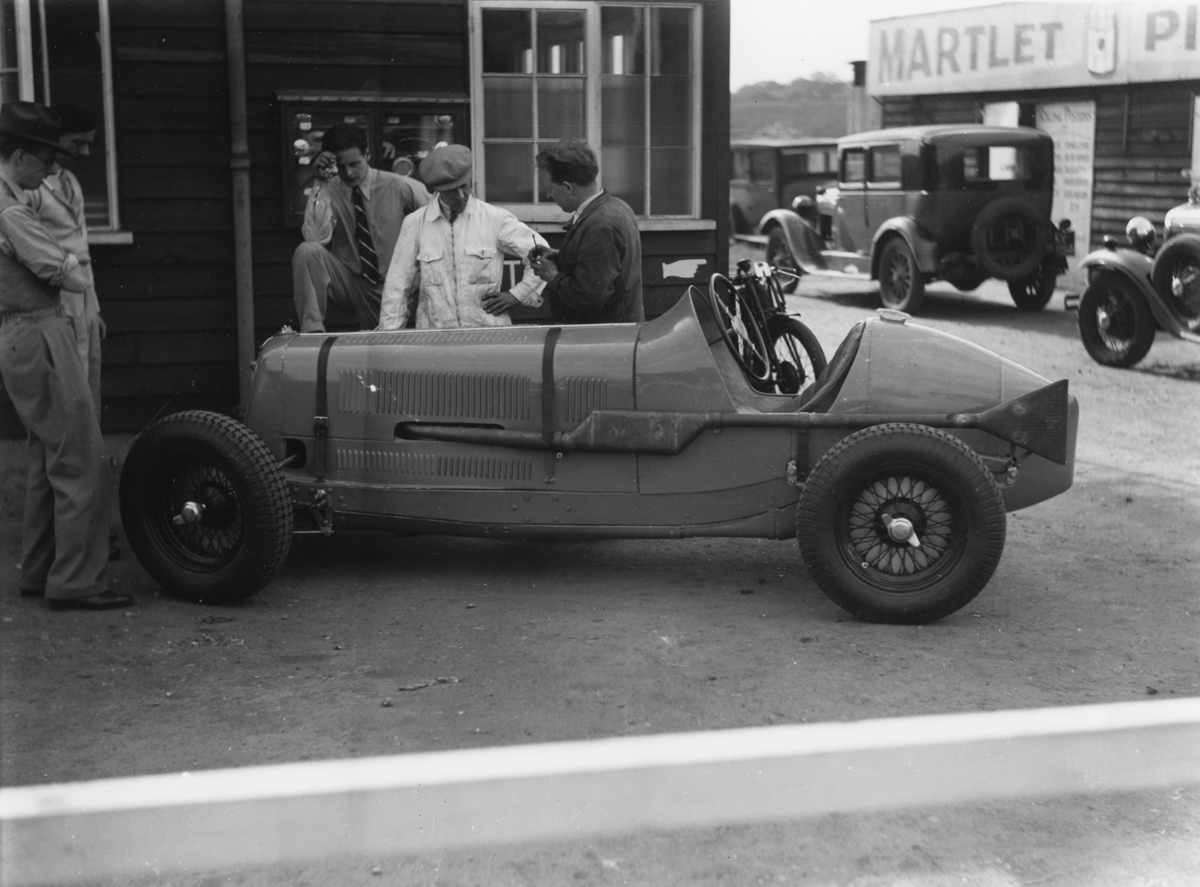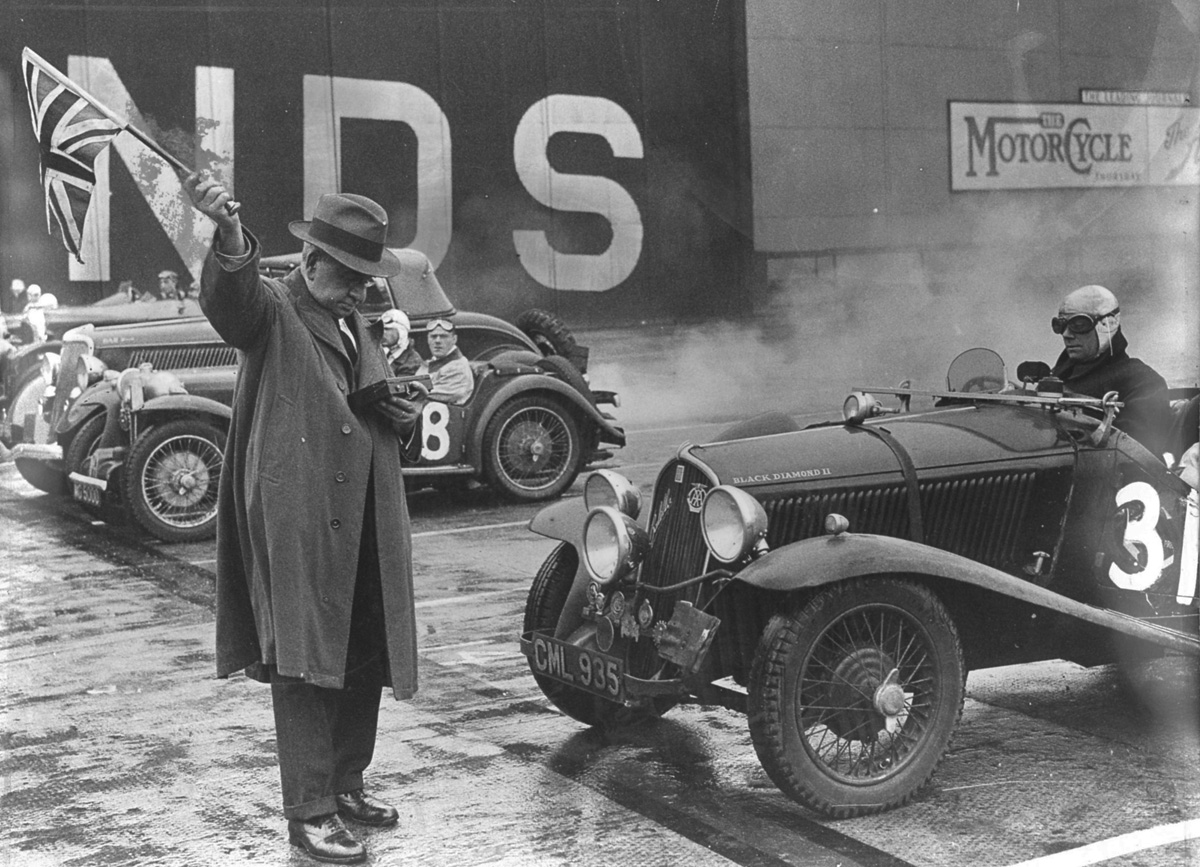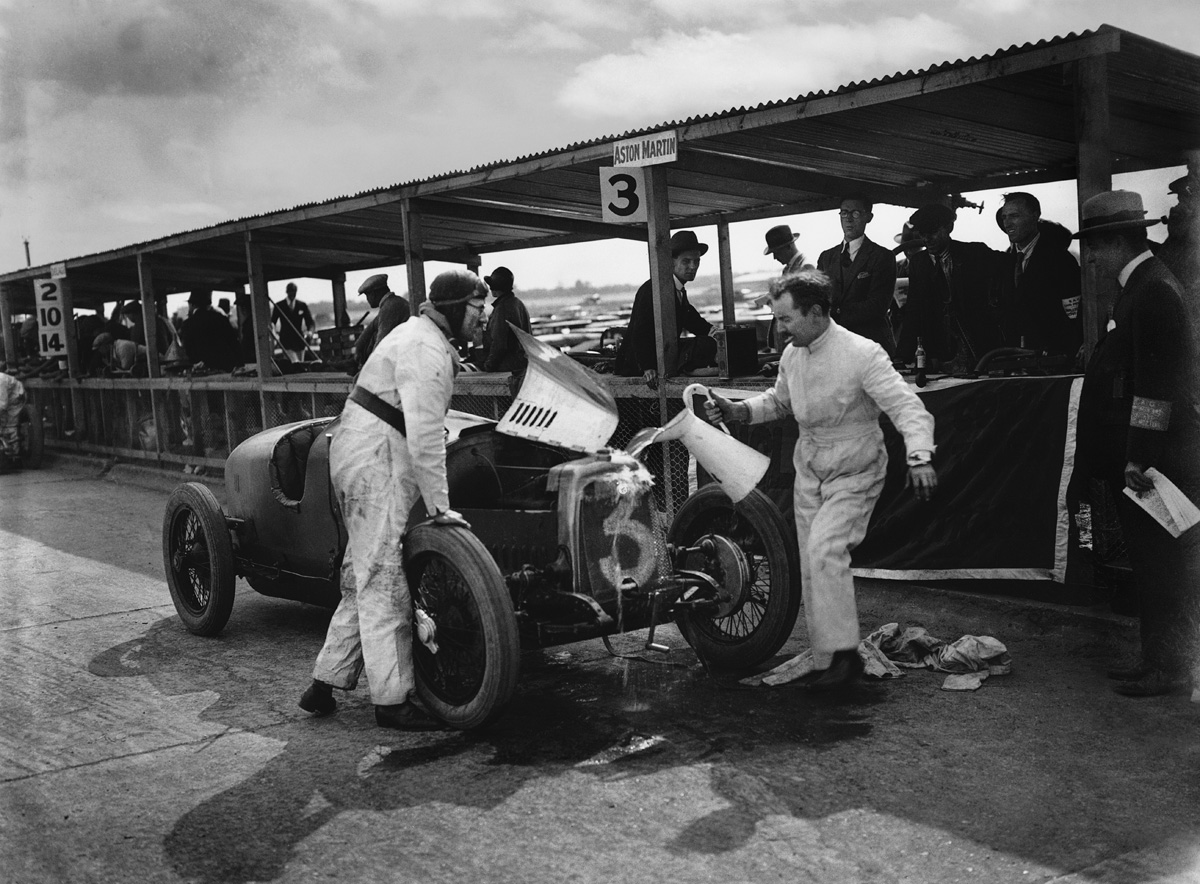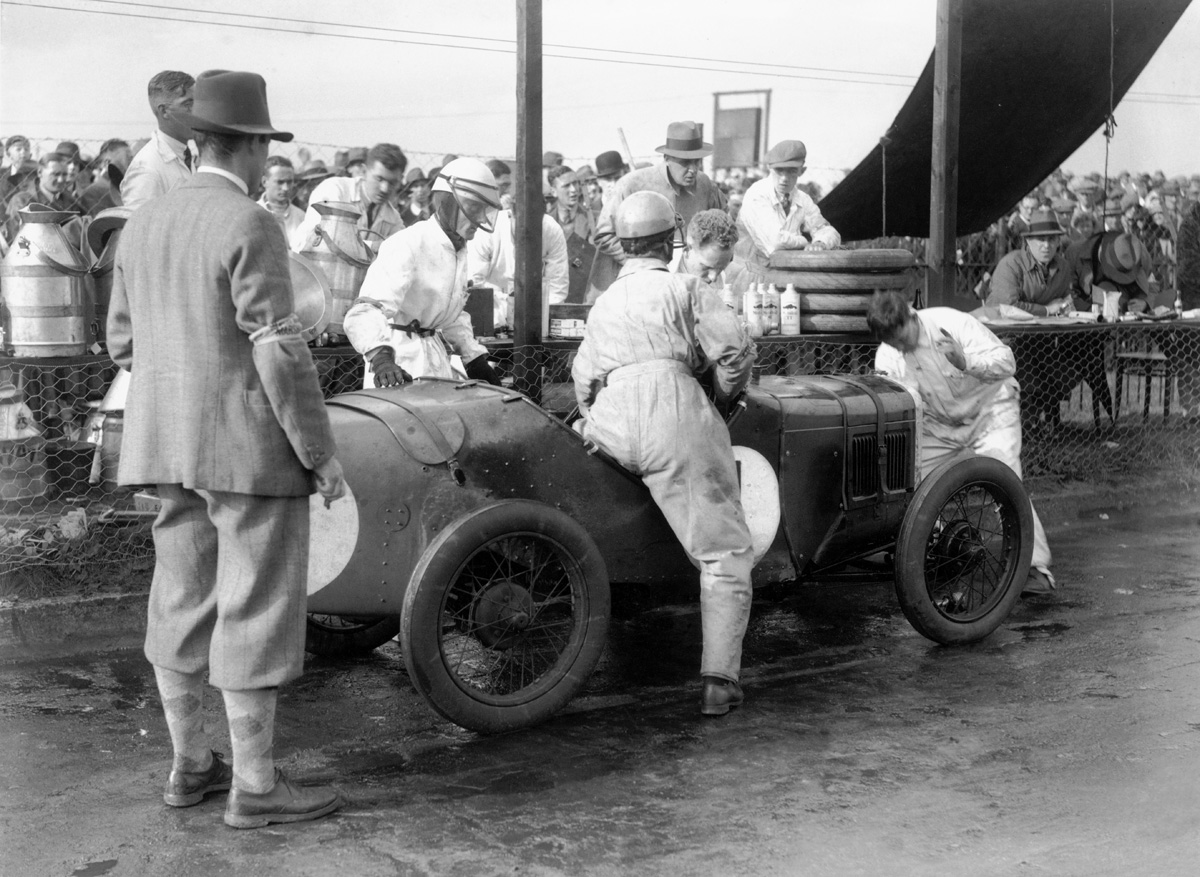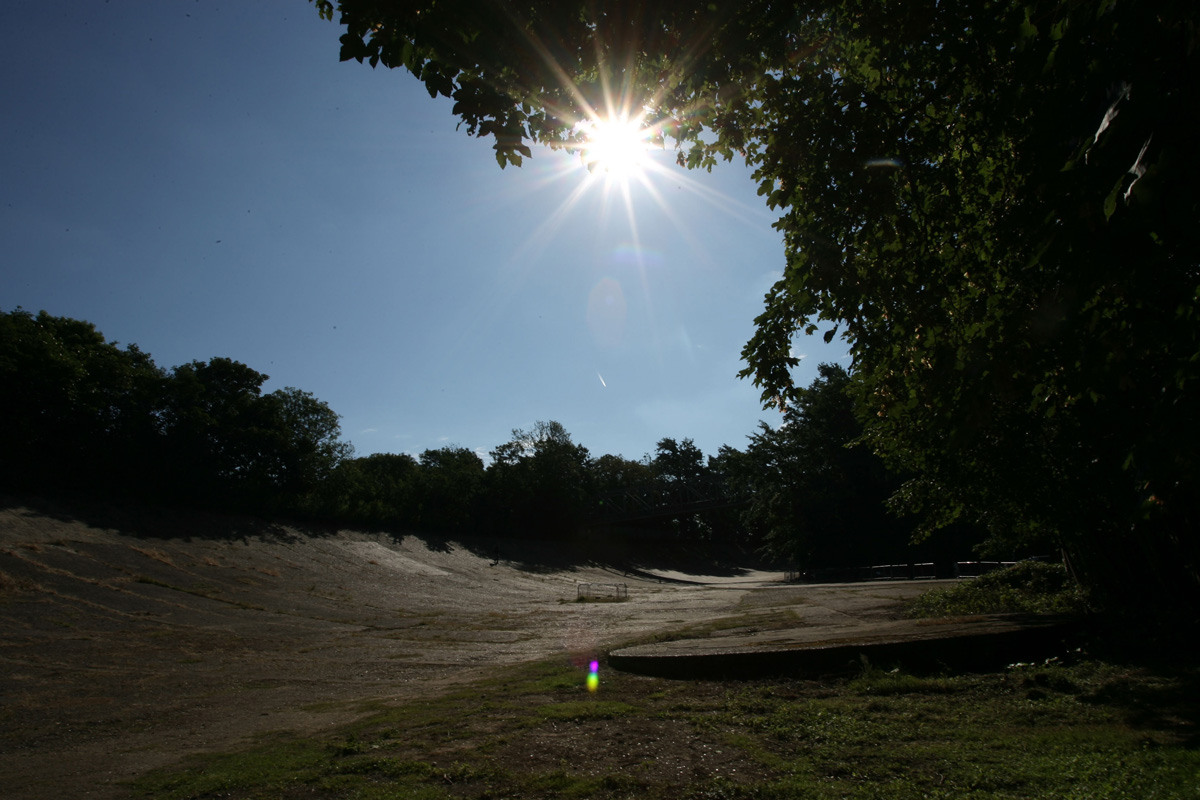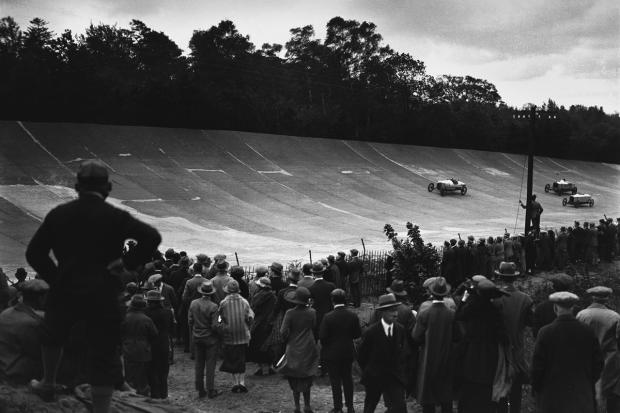
The Brooklands circuit in Surrey was at the epicentre of motorsport in Britain before racing ceased at the outbreak of war in 1939. It was the brainchild of landowner Hugh F. Locke King and opened in 1907, making it the world's first purpose-built banked racing circuit, and only its second-ever racetrack (a year behind the Aspendale Raceway in Australia).
The circuit played host to some of the most memorable sporting battles from the early years of motor racing in Britain, as well as being the site of countless speed and endurance records – the first of which took place just days after the opening ceremony.
It was also famous for attracting 'the right crowd and no crowding'. Major Brooklands race meetings were key dates on the social calendar, with the great and the good often in attendance.
Copyright LAT
The 30ft high banking at Brooklands was built for one thing: speed. It is perhaps no surprise, then, that a record-breaking run was carried out in Weybridge before any racing had taken place.
Just days after the opening ceremony (pictured), Selwyn Francis Edge drove his six-cylinder Napier for 24 hours, covering 1581 miles and setting a record that would stand for 17 years.


